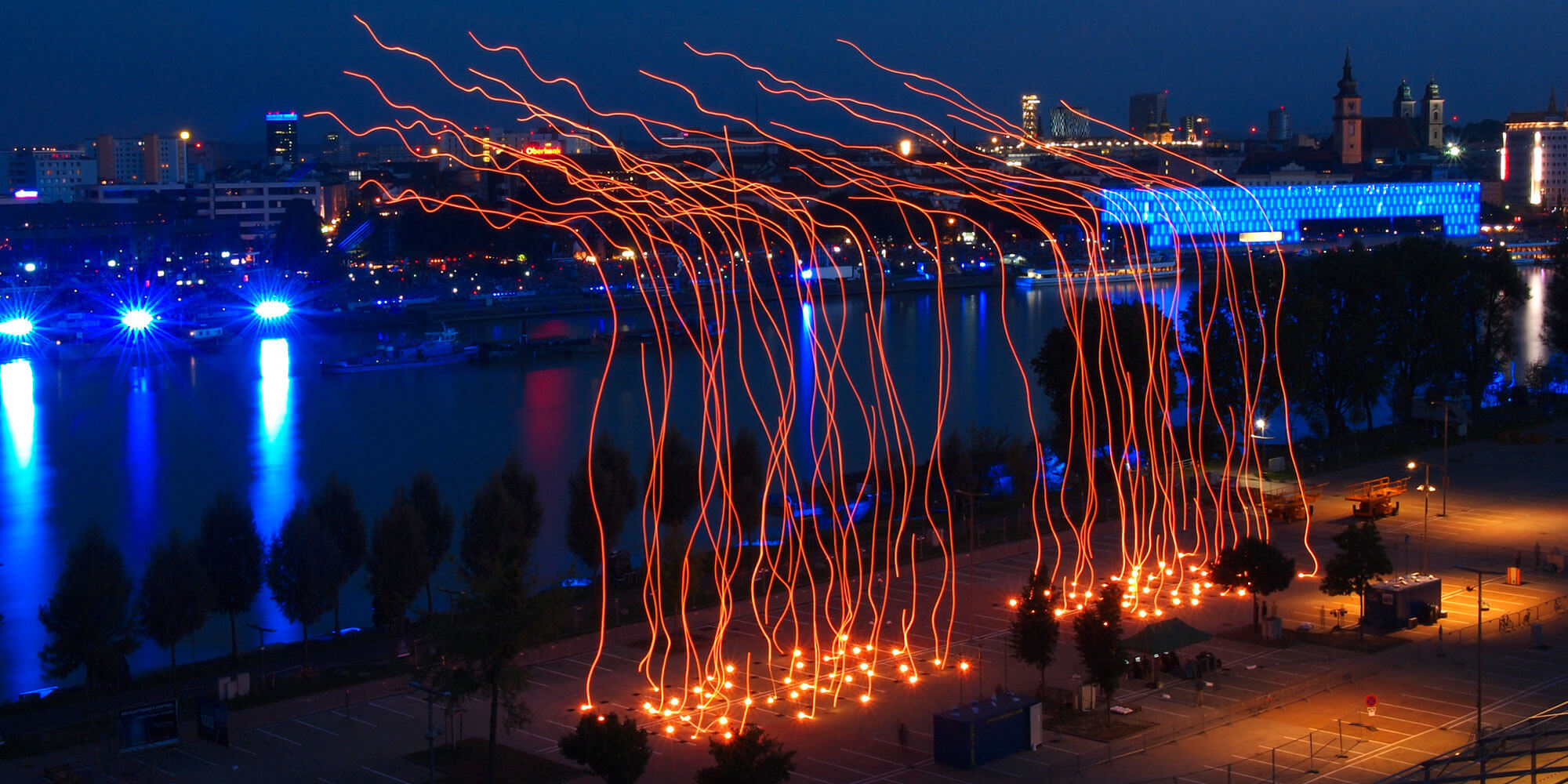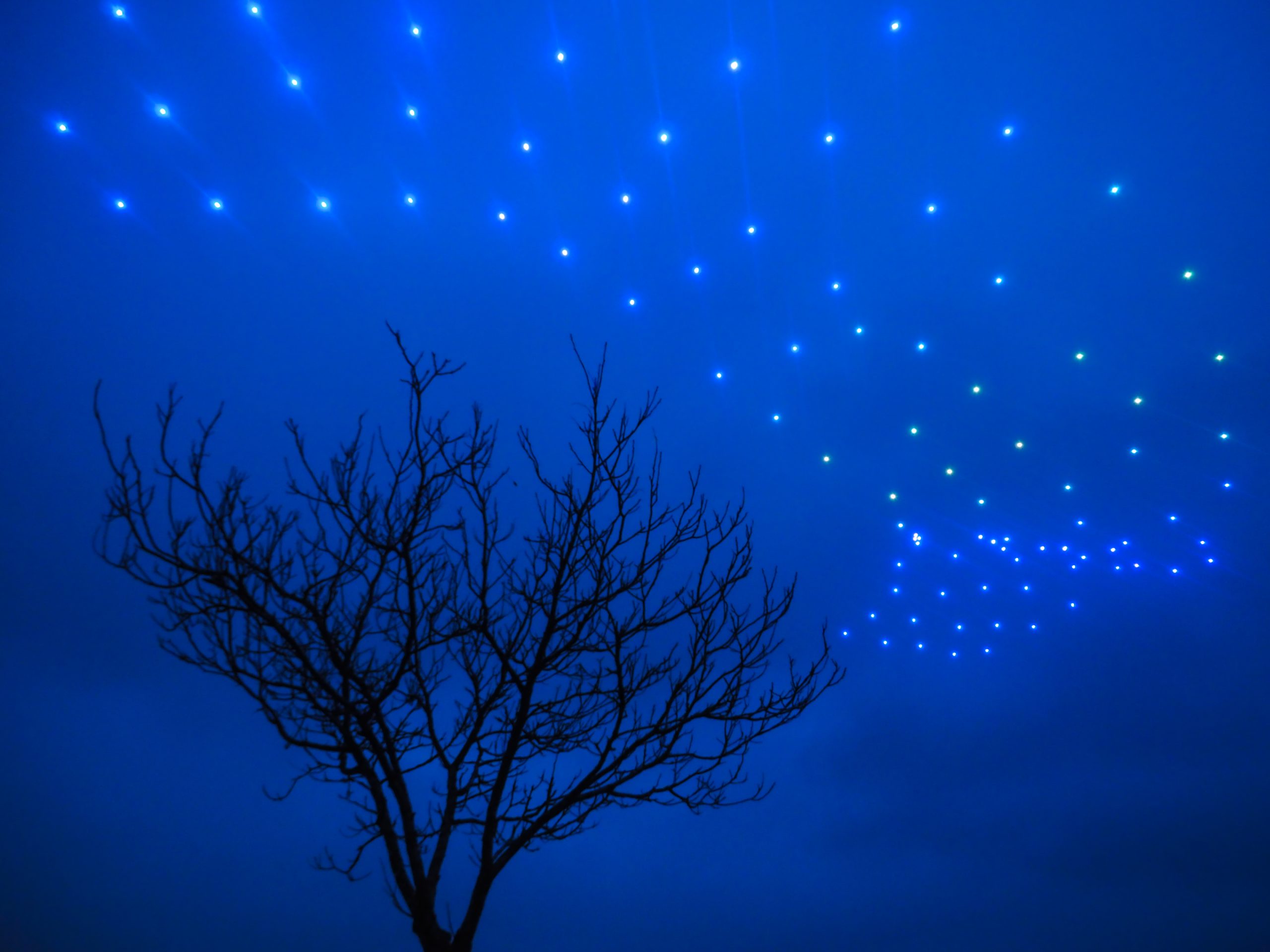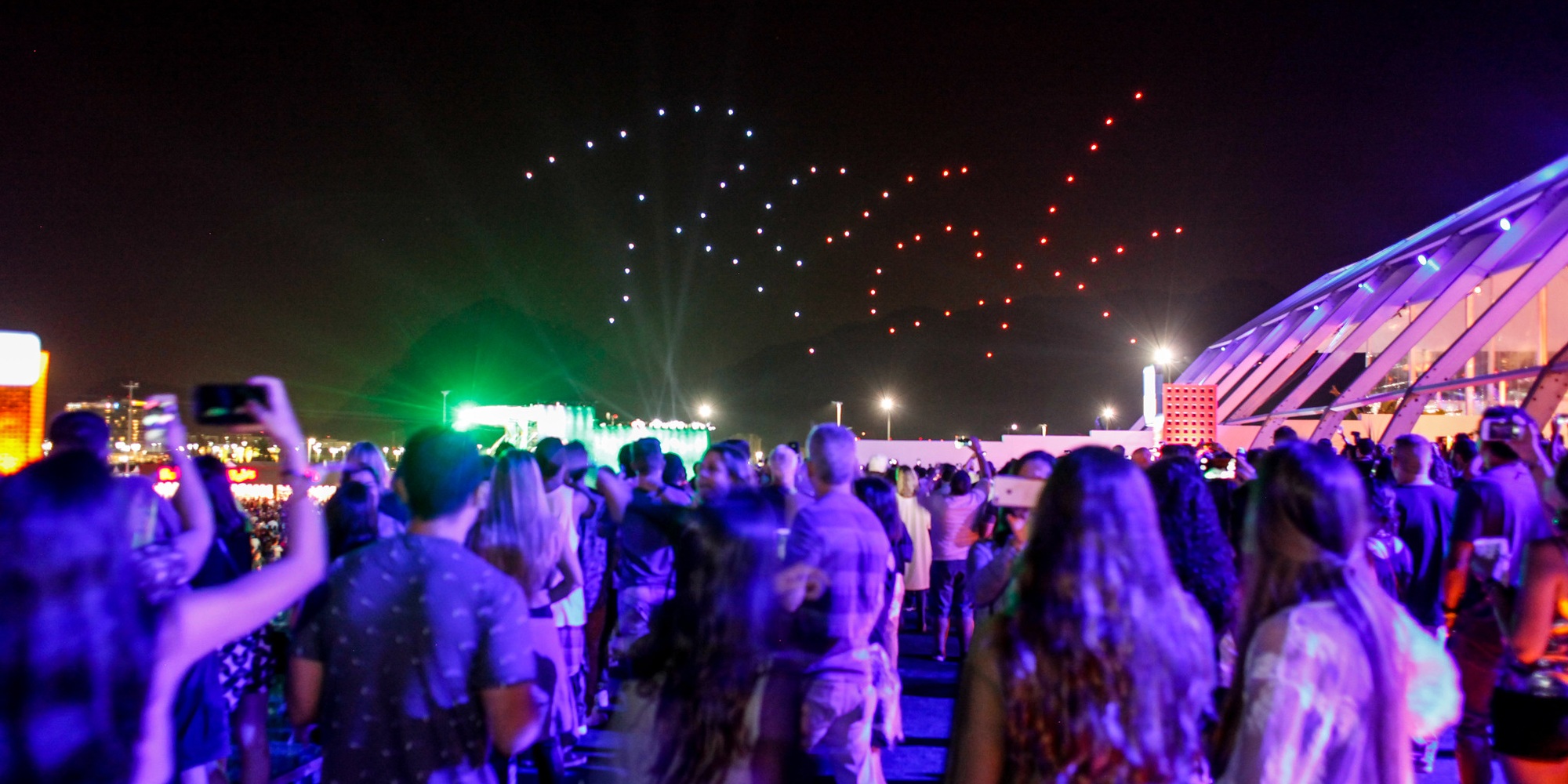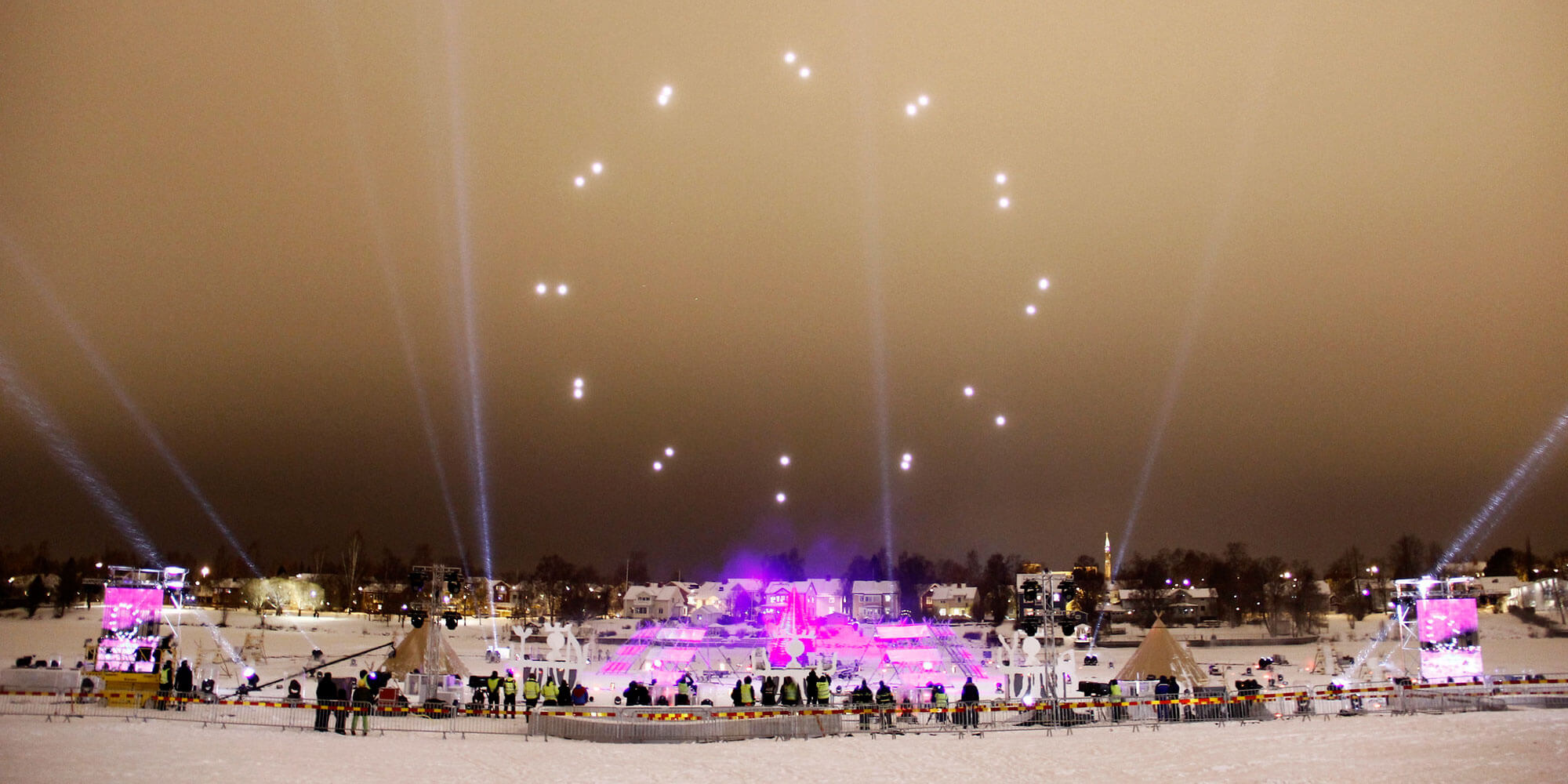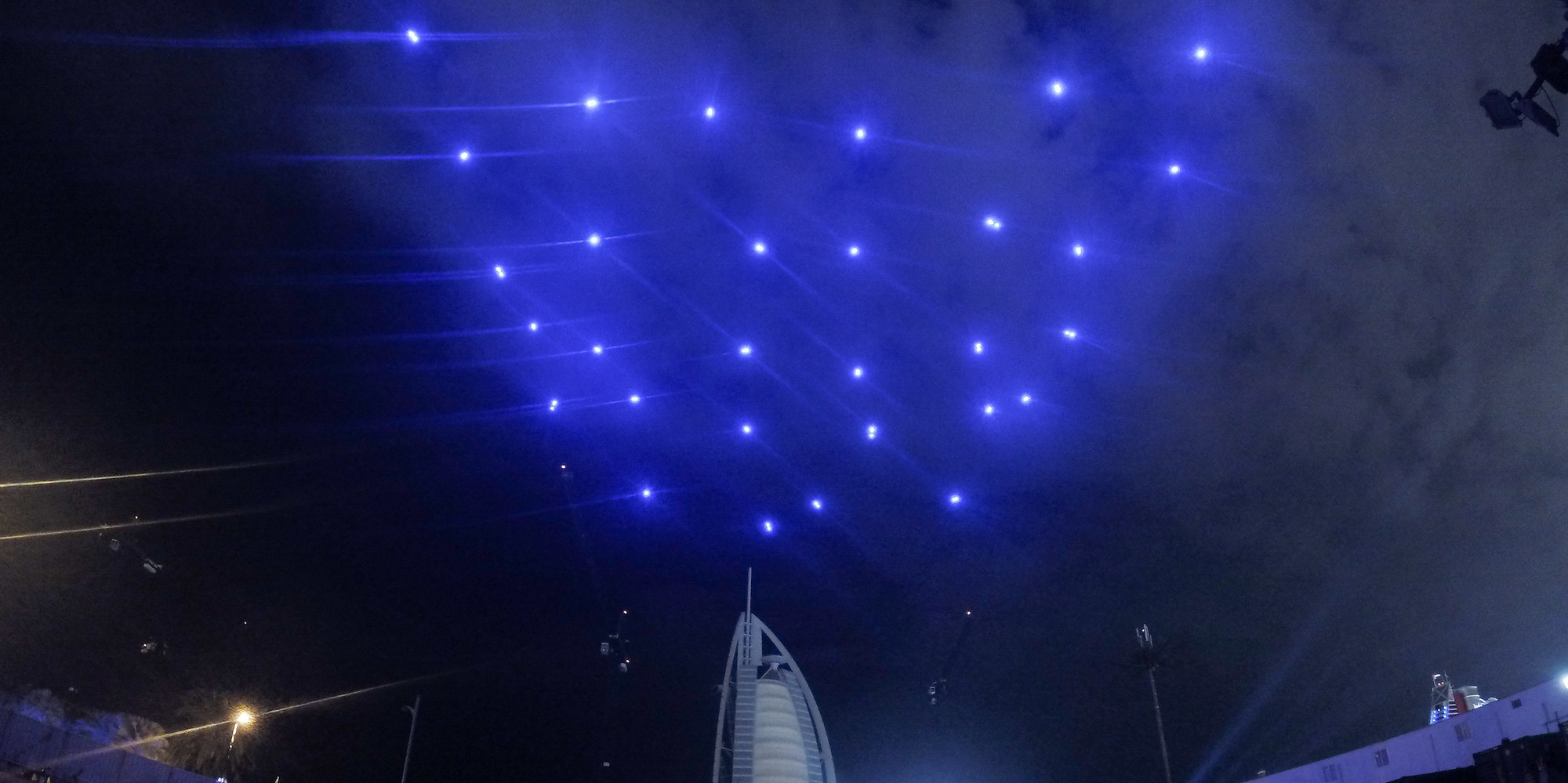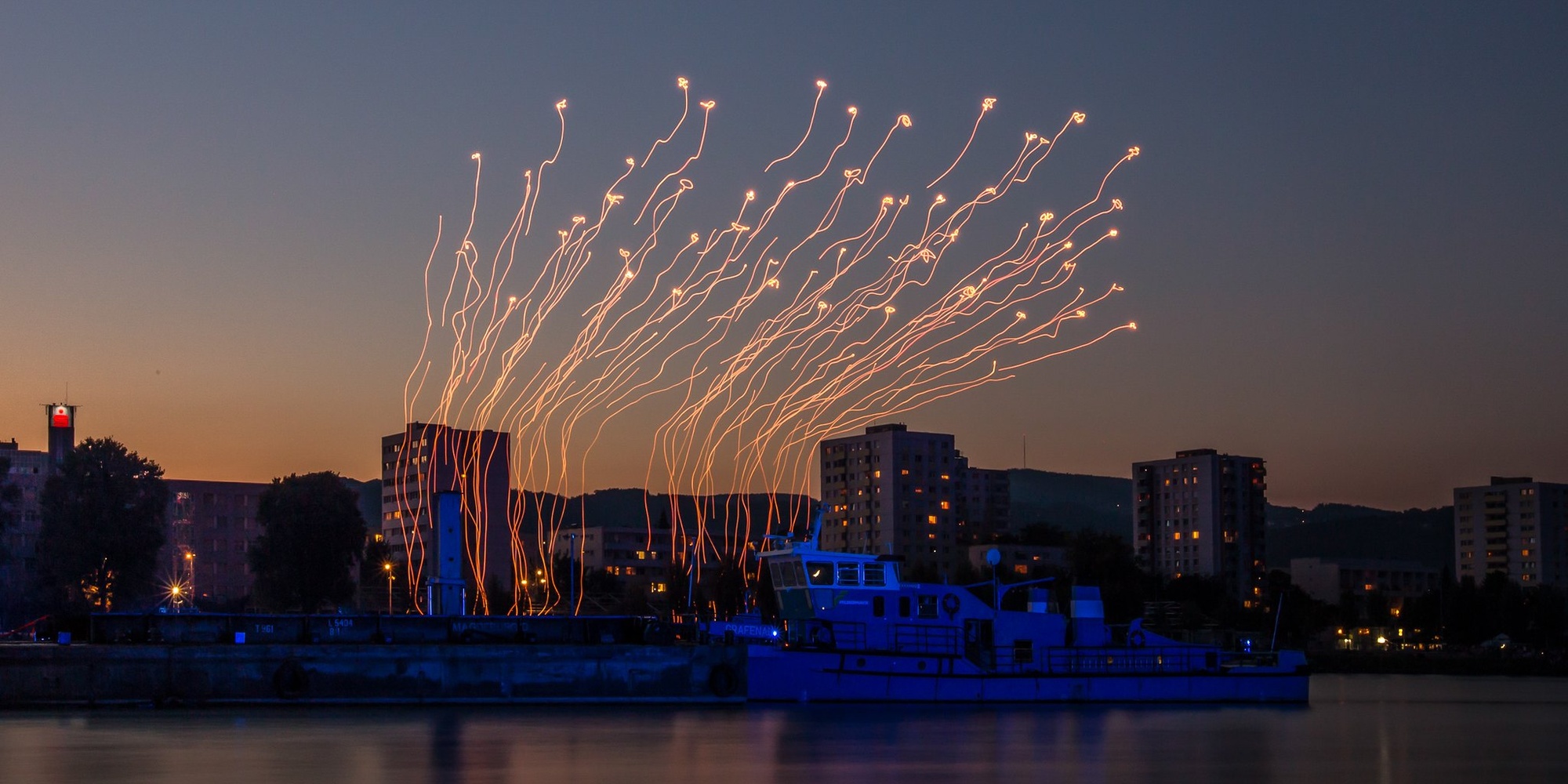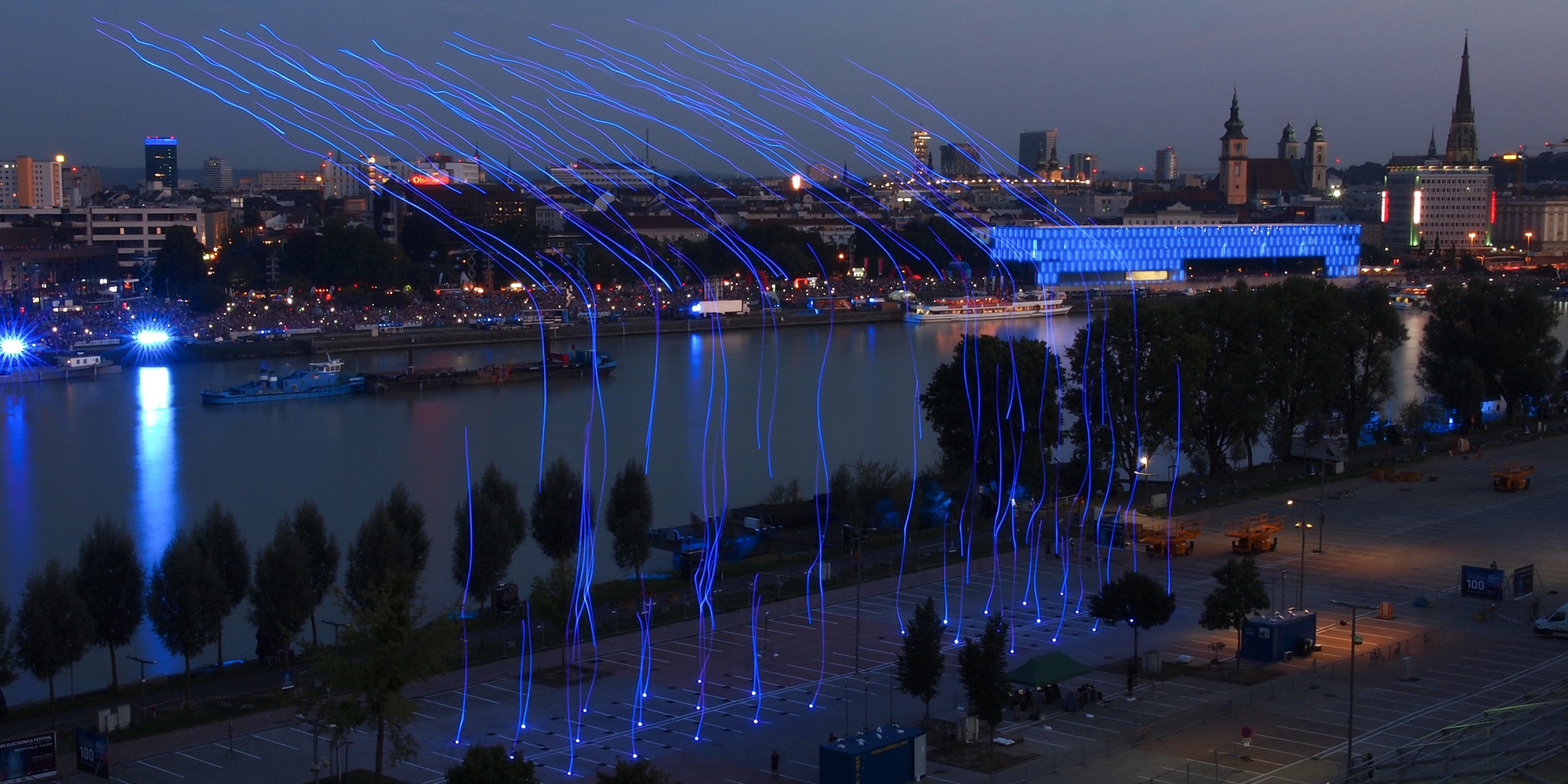In September 2012, a new medium for physical-visual expression was born along the banks of the river Danube in Linz: The world’s first large-scale outdoor formation drone flight illuminated the night sky as part and centerpiece of the open-air music festival Klangwolke.
2012: The first swarm of drones illuminates the night sky
Since then, drone shows have captivated millions of people at countless events all over the world – and it all began with a vision of the researchers, engineers and artists of the Ars Electronica Futurelab.
Spaxels means Space Elements, analogous to Pixels, Picture Elements: The dots in three-dimensional space form a shape, the body of which is completed by our imagination. The Spaxels have defined a new type of display in space; at the same time, they inverted the picture of drones as agents of surveillance by becoming the watched instead of the watchers. At the same time, they have established themselves as a medium for a visual spectacle and thus an expressive alternative to fireworks.
The term Spaxel refers to a swarm of drones of the Futurelab that performed in shows across the globe in the following years. But even after the original Spaxels swarm was retired in 2018, the name has become our term for any of our endeavours that involve light-bearing drones, in projects such as Space Ink or Sky Compass.
Performances around the world
In our light shows, the drones followed strictly choreographed paths, deterministically – notwithstanding weather and unexpected interferences – and centrally controlled. These choreographies were carefully designed by our artists to achieve unique aesthetic qualities in this unusual medium. In some projects (such as Shared Space Spaxels), we have explored scenarios in which the drones react to humans that interact with them in their own space via experimental interfaces – as artistic explorations or design studies for future human-robot interactions.
From Fluxels to swarms+art
Based on the Spaxels, the Ars Electronica Futurelab team collaborated with NTT to develop the Fluxels: big ground robots with hexagonal LED displays that as a swarm serve as a new kind of mosaic or “walking window” with fast, flowing movements. Fluxels are more concrete than Spaxels, such as being able to display high-resolution video, and – contrary to light shows in the sky – are best viewed from above.
To summarize the Futurelab’s development work in drone technology and open the project to other artists and partners in industry and education, the swarms+art website has served as a platform since 2023. Here you can find insights into research such as the groundbreaking swarmOS operating system as well as detailed project information, videos and patents.
More about Spaxels Swarm Art Performances
- The Art of Swarms (2021)
- Swarm Compass: A Sea Change in Visualizing Events by Swarm Intelligence (2017)
- Sky Compass: Going Beyond Navigation by the Stars (2017)
- Spaxels Research Initiative – Swarms of the Future (2017)
- SPAXELS rock in Rio – A test run near Linz (2017)
- Drone 100: A World Record with 100 Points (2016)
- DRONE 100 in Linz: A Behind-the-Scenes Look (2016)
- Around the World via Quadcopter (2016)
- DRONE 100 – Spaxels Over Linz: Test Flight in the Mühlviertel (2016)
- The Spaxels at the Eurovision Song Contest (2015)
- Spaxels in Dubai (2014)
- Lightpainting with Spaxels (2013)
- Spaxels testflight and show in Linz (2013)
- Spaxels in London (2013)
- The quadrocopters fly again (2012)
- Spaxels – Test at the Donauparkstadion (2012)
